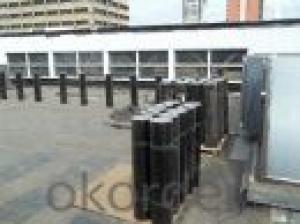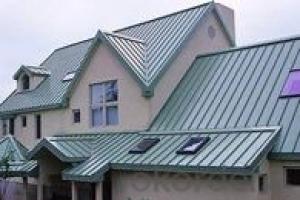SBS Waterproof Material Self Adhesive Aluminium Membrane
- Loading Port:
- Shanghai
- Payment Terms:
- TT OR LC
- Min Order Qty:
- 1000 m²
- Supply Capability:
- 200000 m²/month
OKorder Service Pledge
OKorder Financial Service
You Might Also Like
Product description
SBS Waterproof Material Self Adhesive Aluminium Membrane is produced with SBS elastomer and bitumen as raw materials, using polyethylene film.
Aluminium foil coated on the upward or no file(both side self-adhesive) while self-adhesive protection layer on the downward
surface.It has a widely prospect new contruction waterproof materials. Good self-adhesion, no leaking,cold flexibility,especially
in self-adhesion. That is unque product in waterproof and application.
Packaging & Shipping
use advanced equipment to produce 2 meters WSBS Width Elastomeric Modified Bitumen Waterproofing Membrane which is made of bitumen modified with Styrene-Butadiene-Styrene (SBS) as dipping and painting. Its upper surface covers PE membrane and color sand or schist, and lower surface is made of isolation material. Products correspond to the national standards GB18242-2008(elastomeric modified bitumen waterproofing membrane).
Package and transportation-- SBS waterproof membrane / APP waterproof membrane / Asphalt waterproof membrane for building waterproofing construction :
1. Torch on bitumen membrane sheets 4mm should be stored under dry and ventilated conditions.
2. Different types of membranes must be piled separately.
3. Under usual condition, storage period is one year since production date.
4. Membrane roll should be put vertically during transportation. It should be kept away from sunshine and rainwater.
.
Advantagee
1.1m or 2m width, we can produce as your requirment
2.Simple and Efficient Construct, Greatly Saving Construct Period
3.Advanced Production Line
4.Excellent Comprehensive Physical Properties
5.Stable Dimension
6.Wide Adaptability of Facing Material
7. Cold-applied construction with no open flame and self-adhesion without bonding agent make it safe, low- carbon, environmental, and economical.
8. Excellent adhesive performance guarantees the integrity of waterproof layer.
9. Good rubber elasticity, elongation and shear stress.
10. Good low-temperature property.
Application method
1) Widely used in the industrial and civil building roofing, underground, pool, tunnel, wooden and metal roofing.
2) Specially applied in the oil depot chemical factory, garment factory, and granary.
3) Especially used in cold places.
4) Tape used for sealing all construction material surfaces.
Our Services
1.If you need some advises for the waterproof construction, we have the best engineer to serve you.
2.We send the free samples to you by freight collect.
3.We will guarantee the quality and the competitive price.
4.We will give you the best packaging and safe shipping.
5.If any problem, we will always be right here waiting for you.
Storage:
Different types or specifications of products should be separated, not mixed.
Keep it dry and ventilated, protected from the sun or rain.
Storage temperature should never be higher than 45 °C. Pile up the membranes flatwise whose stockpile height never exceeds five layers. One layer is guaranteed if it is placed vertically.
Prevent it from inclination or In the process of transportation, it should be lying in case of inclination or lateral pressure. If necessary, cover it with felt-cloth.
Storage time is at least one year from manufacture date on if the product is under normal operation of storage.
Technical Parameters
Item | Index | ||||||
1 | Thickness of resin layer of the middle fabric ,mm≥ | - | - | 0.40 | 0.40 | 0.40 | |
2 | Tensile performance | Max tensile strength,N/cm ≥ | - | 120 | 250 | - | 120 |
Tensile strength,NPa ≥ | 10 | - | -10 | - | - | ||
Max elongation% ≥ | - | - | 15 | - | - | ||
Breaking elongation % ≥ | 200 | 150 | - | 200 | 100 | ||
3 | Heat treatment size change rate%≤ | 2.0 | 1.0 | 0.5 | 0.1 | 0.1 | |
4 | Cold bonding | -25°c No cracks | |||||
5 | Watertightness | 0.3mPa,2h waterproof | |||||
product show
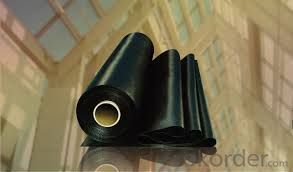
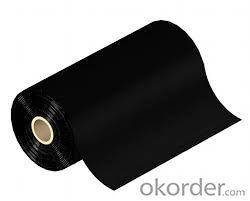
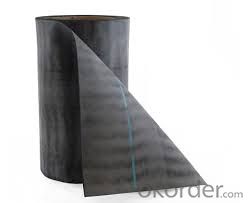
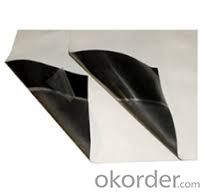




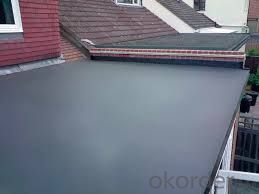
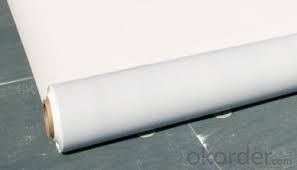
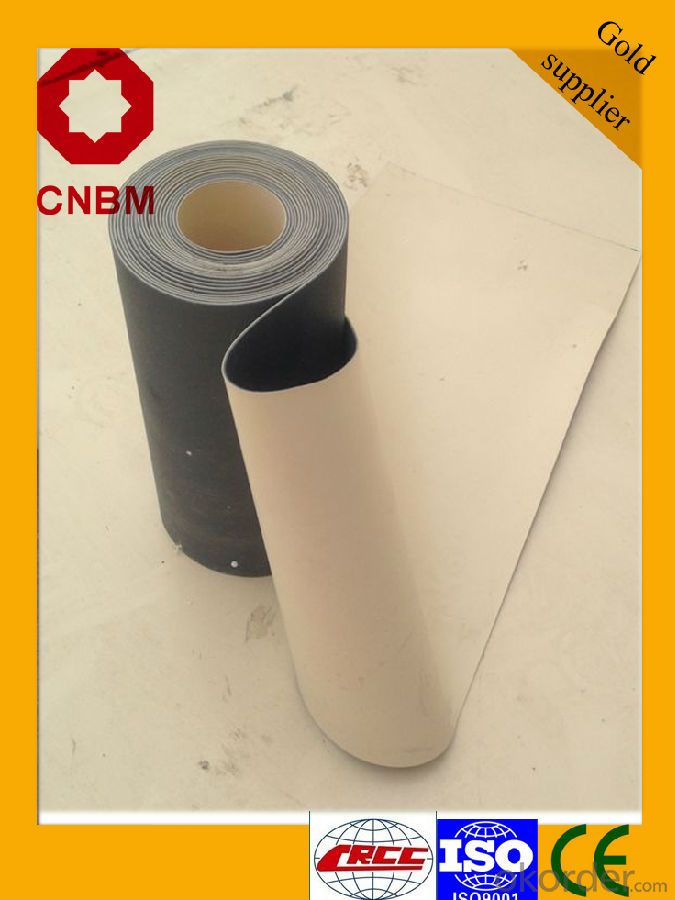
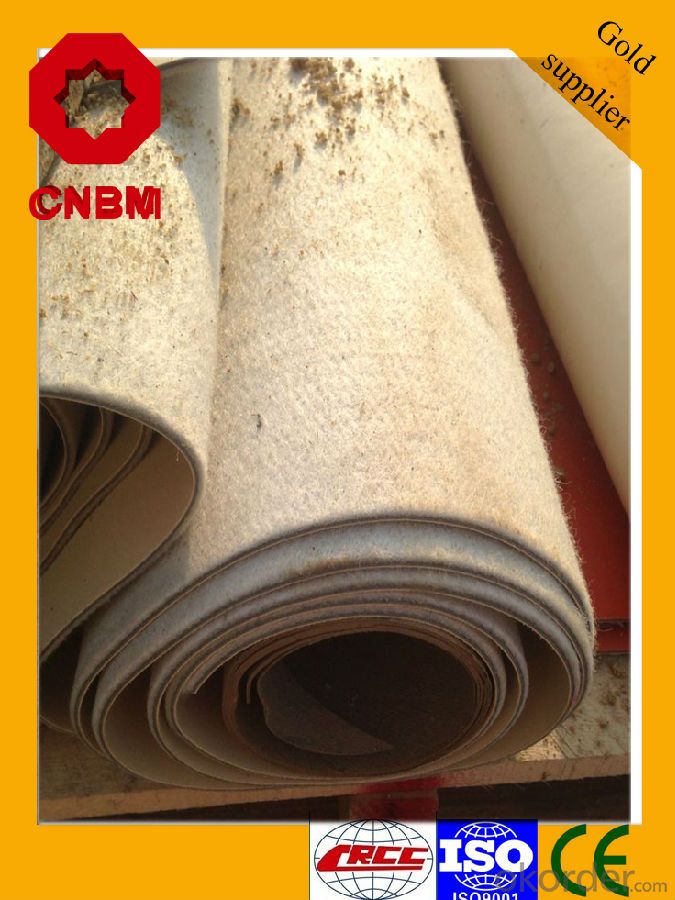
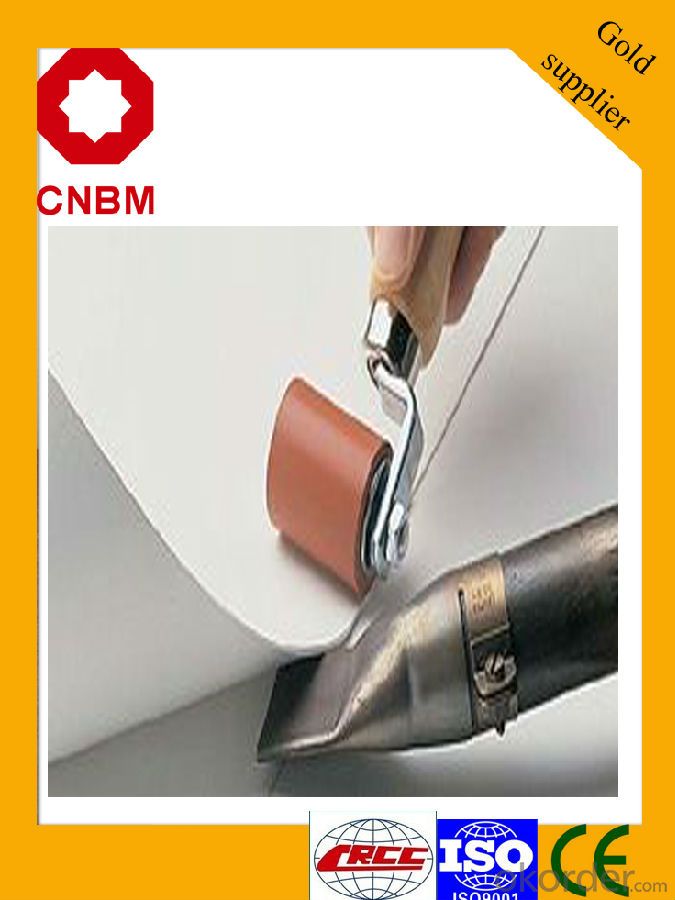

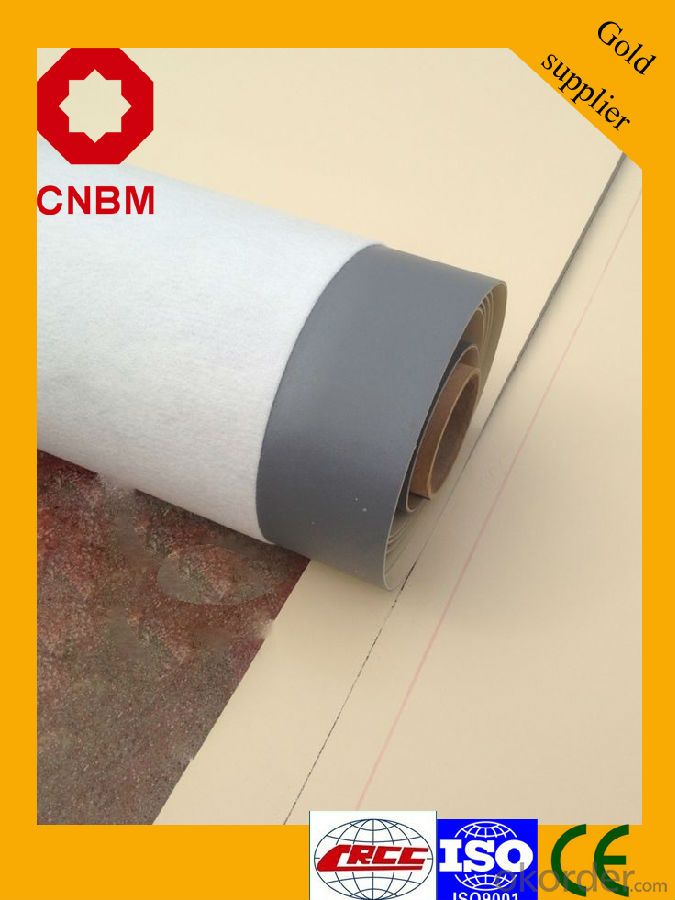
FAQ
Q: What's the de6abf1fe186f8d58506cbcfe46eed814d.jpglivery time ?
A: 3-5 days for 1-600 rolls, 10-15 days for container.
Q: What's the payment terms ?
A: TT/LC
Q: How do you make replacement with quality problems ?
A: New replacement will be packed into your next order or send to you directly after receive video or photo about quality problems.
- Q:How does a waterproofing membrane adhere to the substrate?
- A waterproofing membrane adheres to the substrate through the use of adhesive materials or mechanical bonding techniques. These can include the application of liquid adhesives, hot asphalt, or the use of mechanical fasteners such as screws or nails. The objective is to create a strong and secure bond between the membrane and the substrate, ensuring effective waterproofing and preventing water penetration.
- Q:Waterproof basement is empty shop or full shop
- Basement waterproof construction specification. Basement waterproof acceptance specification, to see their own.
- Q:Can a waterproofing membrane be used in saunas?
- Indeed, a sauna can utilize a waterproofing membrane. Given that saunas consist of environments abundant in moisture, implementing a waterproofing membrane can effectively avert water damage and shield the underlying structure against moisture infiltration. The membrane functions as a barrier, effectively impeding the permeation of water and mitigating potential complications like mold growth, mildew formation, and rot. The selection of a waterproofing membrane specifically engineered for high-moisture regions, capable of withstanding the intense heat and humidity characteristic of saunas, is of utmost importance. Additionally, proper installation and adherence to manufacturer guidelines are essential to guarantee the efficiency and durability of the waterproofing membrane within a sauna setting.
- Q:Does a waterproofing membrane require a protective layer?
- A protective layer is necessary for a waterproofing membrane. It has various functions. Firstly, it prevents damage to the membrane during and after installation by acting as a barrier against sharp objects, construction debris, and potential punctures. Additionally, the protective layer distributes loads evenly and provides stability to the membrane, reducing the risk of damage from foot traffic or heavy equipment. Moreover, the protective layer acts as a shield against UV rays, which can degrade the membrane over time and cause reduced effectiveness and potential leaks. It also helps regulate temperature fluctuations that can stress the membrane and compromise its waterproofing capabilities. To summarize, a protective layer is crucial for the durability and performance of a waterproofing membrane. It safeguards against physical damage, UV radiation, and temperature fluctuations, ensuring the membrane effectively keeps water out and maintains the integrity of the protected structure.
- Q:Can a waterproofing membrane be used in bathrooms?
- Indeed, bathrooms can benefit greatly from the utilization of a waterproofing membrane. It is strongly advised to employ such a membrane in bathrooms as a preventive measure against water-related harm and leakage. Typically, this membrane is applied to both the walls and floors, establishing a protective barrier that inhibits water infiltration, subsequently averting structural deterioration or the proliferation of mold. This is particularly crucial in areas of heightened water exposure, such as showers and the vicinity of bathtubs. These waterproofing membranes are engineered to endure moisture and offer enduring safeguarding, thereby assuring the soundness of the bathroom and prolonging its longevity.
- Q:Can a waterproofing membrane be applied on both interior and exterior surfaces of a structure?
- Yes, a waterproofing membrane can be applied on both interior and exterior surfaces of a structure.
- Q:Can waterproofing membranes be used on rooftop terraces?
- Yes, waterproofing membranes can be used on rooftop terraces to protect them from water damage and ensure their longevity.
- Q:Are waterproofing membranes resistant to water vapor transmission?
- Yes, waterproofing membranes are resistant to water vapor transmission. These membranes are designed to create a barrier that prevents water from penetrating through them. They are typically made from materials that are impermeable to water, such as rubber, plastic, or bitumen. This means that they effectively block the passage of liquid water, preventing it from seeping into the underlying structure. However, it is important to note that while waterproofing membranes can effectively resist water vapor transmission, they may not completely eliminate it. Some amount of water vapor may still pass through the membrane, but it is significantly reduced compared to other materials that are not designed for waterproofing purposes.
- Q:How does a waterproofing membrane handle seismic movements?
- A waterproofing membrane is designed to provide protection against water intrusion and leaks in structures such as buildings, basements, or roofs. While its primary function is to prevent water damage, it also plays a role in handling seismic movements to some extent. Seismic movements, or earthquakes, can cause significant stress and strain on structures, leading to cracks, fissures, or even the complete collapse of buildings. These movements generate intense vibrations and ground motion, which can compromise the integrity of waterproofing systems. In response to seismic movements, a properly installed waterproofing membrane is designed to be flexible and elastic. It can absorb and distribute the energy generated by the ground motion, minimizing the impact on the structure and reducing the likelihood of water infiltration. One way a waterproofing membrane handles seismic movements is through its ability to elongate and stretch. During an earthquake, the membrane can deform and accommodate the movement of the structure without tearing or breaking. This flexibility allows it to maintain its waterproofing capabilities even under extreme conditions. Additionally, waterproofing membranes often incorporate reinforcement layers, such as polyester or fiberglass, to enhance their tensile strength and resistance to tearing. These reinforcement layers help the membrane withstand the dynamic forces exerted during seismic events, ensuring its integrity and preventing water from seeping into the structure. It is important to note that while a waterproofing membrane can handle seismic movements to a certain extent, it is not a substitute for proper structural design and earthquake-resistant construction practices. Structures should be engineered to withstand seismic forces, and waterproofing systems should be installed in accordance with industry standards and guidelines to ensure their effectiveness and durability during earthquakes. In conclusion, a waterproofing membrane can handle seismic movements by being flexible, elastic, and resistant to tearing. It absorbs and distributes the energy generated by seismic events, protecting the structure from water infiltration and minimizing potential damage. However, it is essential to combine proper structural design and construction techniques with a reliable waterproofing system to ensure overall safety and resilience during earthquakes.
- Q:Are waterproofing membranes resistant to chlorine exposure?
- Yes, waterproofing membranes are typically resistant to chlorine exposure.
1. Manufacturer Overview |
|
|---|---|
| Location | |
| Year Established | |
| Annual Output Value | |
| Main Markets | |
| Company Certifications | |
2. Manufacturer Certificates |
|
|---|---|
| a) Certification Name | |
| Range | |
| Reference | |
| Validity Period | |
3. Manufacturer Capability |
|
|---|---|
| a)Trade Capacity | |
| Nearest Port | |
| Export Percentage | |
| No.of Employees in Trade Department | |
| Language Spoken: | |
| b)Factory Information | |
| Factory Size: | |
| No. of Production Lines | |
| Contract Manufacturing | |
| Product Price Range | |
Send your message to us
SBS Waterproof Material Self Adhesive Aluminium Membrane
- Loading Port:
- Shanghai
- Payment Terms:
- TT OR LC
- Min Order Qty:
- 1000 m²
- Supply Capability:
- 200000 m²/month
OKorder Service Pledge
OKorder Financial Service
Similar products
New products
Hot products
Related keywords

